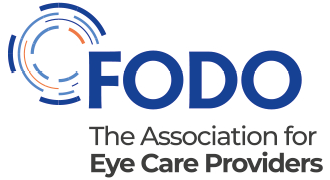Summary
The following Optical Confederation (OC) guidance changes traditional thinking on some aspects of handling non-tolerance. In essence it states that when a practice accepts a "walk-in" prescription then they should also accept responsibility for financing and managing any non-tolerance issues.
It is not good for the patient, or for the image of the profession, to have patients getting bounced back and forth between practices. It is also unsatisfactory to expect the prescriber to fund replacement lenses when they had no control over the supply
It is not always easy to ascertain whether a non-tolerance issue is due to a small Rx difference, a particular lens type, the frame/lens fitting, a fault in the spectacles or a combination of these. It might appear easier to pass responsibility for resolving this elsewhere, however this is rarely if ever satisfactory from the patient's perspective. In any event, all practices experience a small proportion of nontolerance cases in their own dispensing and this is already factored into the practice costs.
This guidance has been endorsed by OCCS [1].
Managing "non-tolerance" issues
This OC guidance offers advice specifically for non-tolerances cases when the sight test and dispense are delivered by different community practices [2].
It is the responsibility of the dispensing practice to resolve any non-tolerance issue and if necessary to issue a new dispense. They have the contract with the patient and they should ensure that the patient has spectacles that are fit for purpose.
Regardless of the reason, in any situation where the patient is unhappy with the spectacles they purchase or the service they receive, the overriding priority must be to resolve the situation:
- In a way that causes least inconvenience to the patient
- Without undermining the patient's confidence in the optical sector, by for example calling into question the competence and professionalism of colleagues in other practices.
The dispensing practice should always act in the best interests of the patient; they might therefore, with the patient's consent, contact the original prescriber to ensure there is no reason to suspect there might be a clinical reason for the non-tolerance [3].
Managing the process between the prescriber and the dispenser
Most non-tolerance cases are resolved without difficulty. In some situations, it may be necessary for the dispensing practice and the prescribing practice to agree an appropriate course of action. For example, in cases where there is a clear clerical error in the prescription the prescribing practice should pay the cost price of putting it right. In cases of genuine non-tolerance the dispensing practice should cover any costs involved.
The patient should not be drawn into commercial resolutions between the prescribing practice and the dispensing practice, but any net benefit should be refunded to the patient. All parties should take care not to allege or imply any failing on the part of the prescribing optician. The new dispense should not be held up while waiting for those discussions to reach a conclusion.
Dispute resolution
In most instances it should be possible to reach agreement on how to manage a particular case. In those instances where an acceptable resolution is not achieved, and one party considers that they have incurred costs as a result of the actions of another party, then they should seek advice from their Optical Confederation representative body.
FODO members can contact us at [email protected].
Originally published: December 2014
Reviewed: November 2020
Next review date: November 2022
Info: This Optical Confederation guidance was published in December 2014 and converted from a pdf to web version in November 2020.
Reference and notes
[1] Letter from Nockolds Solicitors / OCCS on file
[2] Problems with hospital or clinic prescriptions should generally be referred back to the prescriber
[3] College of Optometrists Guidance November 2014. Section C132

 Patients and public
Patients and public
 Policymakers
Policymakers Members
Members News and views
News and views
